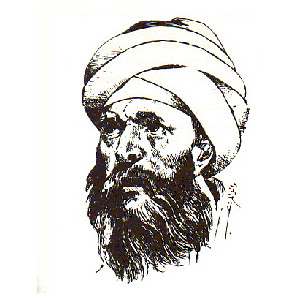

Using the philosophers’ logic against them, he managed to clearly show the holes in the philosophical arguments that led to disbelief. Since the philosophers were experts at logic and argument, they appeared to make very clear arguments for their positions, despite the fact that those positions directly contradicted Islamic belief.Īl-Ghazali took on the challenge of showing the problems in the philosophers’ arguments on their own terms in The Incoherence of the Philosophers, which was published in 1095. For al-Ghazali and other Muslims grounded in orthodox Islamic beliefs, these new ideas were counted as disbelief in the tenants of Islam.Īs al-Ghazali saw it, no Muslim scholar had so far managed to effectively refute these philosophers. Some philosophers would come to believe things such as the eternity of the world and the non-existence of God, or that God is not all-knowing. The dangers of Aristotelian philosophy and logic, according to al-Ghazali, were the conclusions the philosophers came to. Prominent Muslim proponents of Aristotelian philosophy included Ibn Sina and al-Farabi. One of the popular ideologies at the time was philosophy, based on the ancient Greek philosophical models of Aristotle. In his autobiography, Deliverance from Error, al-Ghazali describes the approaches to finding truth that people follow. He eventually moved back to his hometown of Tus, where he died in 1111. His travels and search for a way to purify his intentions had a huge influence on his public role, and he was sometimes met with controversy during his stay in Baghdad. He did eventually go back to Baghdad in 1106 and began teaching again. During his travels, he focused on tazkiya (purification) of his soul and analysis of the various approaches to Islam that were popular during his day. He stated in his autobiography that his intention “was not directly purely to God, but rather was instigated and motivated by the quest for fame and widespread prestige.” Recognizing his spiritual dilemma, he abandoned his post at the Nizamiyya and traveled to Damascus, Jerusalem, and the Hejaz. In 1095, however, al-Ghazali experienced a spiritual crisis during which he began to doubt his intentions in teaching. In Baghdad, al-Ghazali had a very prestigious position and regularly attracted huge crowds to his lectures. He thus appointed al-Ghazali as a teacher in the Nizamiyya School in Baghdad in 1091. Nizam al-Mulk was known for his efforts to establish advanced educational centers around the Muslim world. He was educated in the basics of Islam and Islamic law from an early age, and counted the eminent Shafi’i scholar al-Juwayni among his teachers.Īfter completing his education, he joined the court of the Seljuk vizier Nizam al-Mulk in Isfahan in 1085. He hailed from a Persian family but was fluent in Arabic, which he wrote in, like many other Muslim scholars of his era. Today, he is known as "Hujjat al-Islam", the Proof of Islam, because of his efforts in intellectually fighting against some of the most dangerous ideas and philosophies that plagued the Muslim world during his time.įrom the ubiquitous nature of ancient Greek philosophy to the rising tide of political Shi’ism, Imam al-Ghazali did not leave a stone unturned in his effort to bring back serious Islamic scholarship in the face of heterodox threats.Ību Hamid al-Ghazali was born in 1058 in the city of Tus, in modern Iran.

One of the greatest renewers of the faith in history was the 11th century scholar Abu Hamid al-Ghazali. For each one of these great figures, a specific historical context was necessary for them to accomplish what they did. Throughout history, great Muslim intellectuals, rulers, generals, and artists have come and managed to rejuvenate faith in the Muslim world and help Muslims deal with the problems of that age.

CAIRO - 8 June 2017: Prophet Muhammad (PBUH) promised that every century, a re-newer of the faith of Islam will arise.


 0 kommentar(er)
0 kommentar(er)
